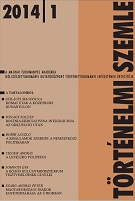"Vagyon egy Oremus nevű szőllő, fő bort termő...". A sátoraljaújhelyi Oremus szőlő történetéhez
"There is a Vineyard Called Oremus, Yielding Plenty of Wine...". On the history of the vineyard "Oremus" at Sátoraljaújhely
Author(s): Kornél NagySubject(s): History
Published by: Magyar Tudományos Akadémia Bölcsészettudományi Kutatóközpont Történettudományi Intézet
Summary/Abstract: The vineyard called Oremus is one of the best known and most exciting wine-producing areas in the history of the Tokaj-Hegyalja region and of Hungary in general. Its reputation was mainly due to the legend, later revealed as unfounded, according to which it was from the produce of the Oremus vineyard laying in the Várhegy promontory near Sátoraljaújhely that Máté Lackó Szepsi, a Protestant (Calvinist( preacher at Erdőbénye, prepared the first aszú-wine in the Tokaj-Hegyalja region for Zsuzsanna Lorántffy, princess of Transylvania. Of course, the apocryphal character of the legend in no way diminishes the historical importance of the Oremus wineyard itself. In the early modern era the Oremus was one of the vineyards belonging to the estate of Sárospatak and in the 17th century to that of Borsi. Its first emergence in the sources has long been thught to have been a reference in the register listing the landed wealth of Péter Perényi in 1567. Recently, however, a charter has been found in the medieval collection of the Hungarian National Archives, which reports in 1462 about a border dispute regarding the Oremus vineyard between a burgher of Sátoraljaújhely and the local Pauline cloister. In the wake of this important find, the present study was written with the aim of reconstructing the history of the Oremus vineyard and placing it in a proper historical context through a meticulous and critical examination of the surviving source material and of the secondary literature from the beginning until the end of the 18th century. In order to do this, it seemed necessary to go back in time as early as the period when the forest ispánate of Sárospatak was formed, and the Walloon settlers appeared there, which led to the emergence of the first settlements in the region and of those plantations which even today function as the centres of the wine production at Tokaj-Hegyalja. Moreover, the paper devotes special attention to the wine-production of those monastic orders, primarily the Paulines, who had also settled in the Hegyalja region. And finally, the very origins of the name Oremus are likewise examined. It is beyond doubt that the name has nothing to do with the Latin verb ’oro’, but rather with an archaic version of the personal name Jerome, which sounded very much like the Latin ’oremus’ verb form. The name was in all probability derived from either Saint Jerome or a landowner called Oremus.
Journal: Történelmi Szemle
- Issue Year: 2014
- Issue No: 01
- Page Range: 91-106
- Page Count: 16
- Language: Hungarian

